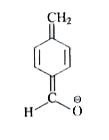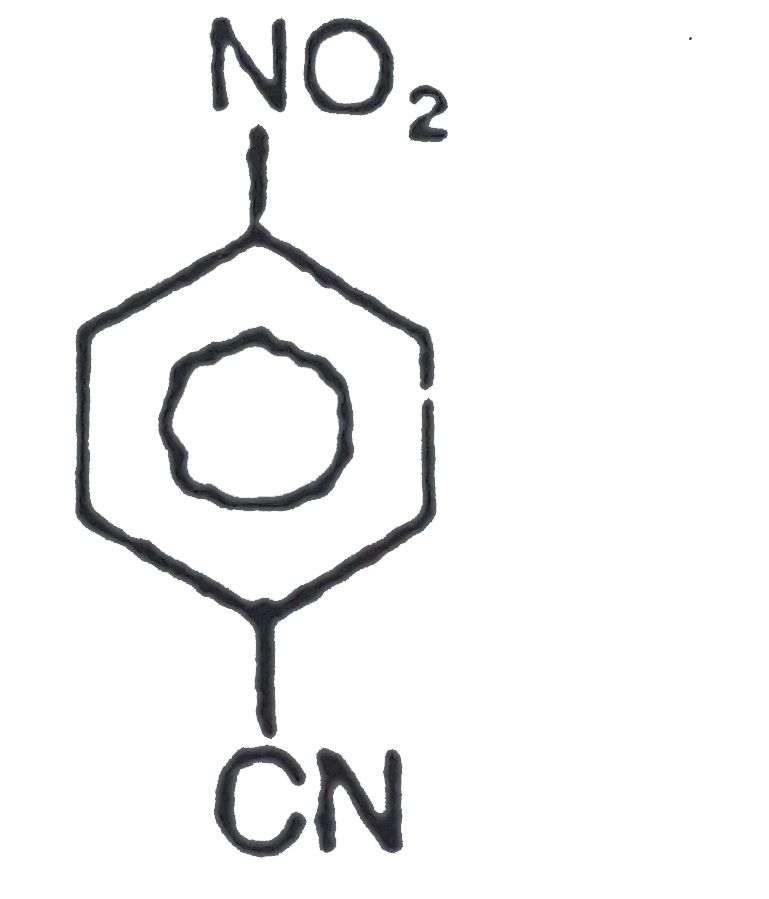Amongst −OH,−CN,CI,−NO2 groups, which do exert + M-effect when present in conjugation with a double bond ?
To determine which of the groups -OH, -CN, -Cl, and -NO2 exert a +M (positive mesomeric) effect when present in conjugation with a double bond, we will analyze each group based on its ability to donate electron density through resonance.
1. Understanding the +M Effect:
The +M effect refers to the ability of a substituent to donate electron density to an adjacent π system (like a double bond) through resonance. This typically occurs when the substituent has lone pairs of electrons that can be delocalized.
2. Analyzing the -OH Group:
The -OH (hydroxyl) group has a lone pair of electrons on the oxygen atom. When -OH is attached to a double bond, it can donate its lone pair to the π system, leading to resonance stabilization. Therefore, -OH exerts a +M effect.
Hint: Look for lone pairs on the substituent that can be donated to the double bond.
3. Analyzing the -CN Group:
The -CN (cyanide) group consists of a carbon triple-bonded to nitrogen. The nitrogen is more electronegative than carbon, which means it pulls electron density towards itself. This results in a shift of electron density away from the double bond, making -CN a -M (negative mesomeric) group. Thus, it does not exert a +M effect.
Hint: Consider the electronegativity of the atoms in the substituent to determine if it withdraws or donates electrons.
4. Analyzing the -Cl Group:
The -Cl (chlorine) group has three lone pairs of electrons. Chlorine can donate one of its lone pairs to the π system of the double bond, allowing for resonance. Therefore, -Cl also exerts a +M effect.
Hint: Check if the halogen can participate in resonance by donating its lone pairs.
5. Analyzing the -NO2 Group:
The -NO2 (nitro) group is a strong electron-withdrawing group due to the high electronegativity of both nitrogen and oxygen. The nitro group pulls electron density away from the double bond, resulting in a -M effect. Hence, it does not exert a +M effect.
Hint: Identify groups that are known to withdraw electron density; they typically do not contribute to a +M effect.
Conclusion:
Among the groups -OH, -CN, -Cl, and -NO2, the groups that exert a +M effect when present in conjugation with a double bond are:
- -OH (hydroxyl)
- -Cl (chlorine)
The +M effect refers to the ability of a substituent to donate electron density to an adjacent π system (like a double bond) through resonance. This typically occurs when the substituent has lone pairs of electrons that can be delocalized.
The -OH (hydroxyl) group has a lone pair of electrons on the oxygen atom. When -OH is attached to a double bond, it can donate its lone pair to the π system, leading to resonance stabilization. Therefore, -OH exerts a +M effect.
The -CN (cyanide) group consists of a carbon triple-bonded to nitrogen. The nitrogen is more electronegative than carbon, which means it pulls electron density towards itself. This results in a shift of electron density away from the double bond, making -CN a -M (negative mesomeric) group. Thus, it does not exert a +M effect.
The -Cl (chlorine) group has three lone pairs of electrons. Chlorine can donate one of its lone pairs to the π system of the double bond, allowing for resonance. Therefore, -Cl also exerts a +M effect.
The -NO2 (nitro) group is a strong electron-withdrawing group due to the high electronegativity of both nitrogen and oxygen. The nitro group pulls electron density away from the double bond, resulting in a -M effect. Hence, it does not exert a +M effect.
Among the groups -OH, -CN, -Cl, and -NO2, the groups that exert a +M effect when present in conjugation with a double bond are:
- -OH (hydroxyl)
- -Cl (chlorine)
Topper's Solved these Questions
- BOOK - ICSECHAPTER - ORGANIC CHEMISTRY : SOME BASIC PRINCIPLES AND TECHNIQUES EXERCISE - SHORT ANSWER TYPE QUESTIONS110videos
ORGANIC CHEMISTRY : SOME BASIC PRINCIPLES AND TECHNIQUES
- BOOK - ICSECHAPTER - ORGANIC CHEMISTRY : SOME BASIC PRINCIPLES AND TECHNIQUES EXERCISE - ESSAY ( LONG ANSWER ) TYPE QUESTIONS42videos
ORGANIC CHEMISTRY : SOME BASIC PRINCIPLES AND TECHNIQUES
- BOOK - ICSECHAPTER - ORGANIC CHEMISTRY : SOME BASIC PRINCIPLES AND TECHNIQUES EXERCISE - REVIEW EXERCISES176videos
ORGANIC CHEMISTRY : SOME BASIC PRINCIPLES AND TECHNIQUES
- BOOK - ICSECHAPTER - HYDROGENEXERCISE - NCERT TEXT-BOOK EXERCISE (With Hints and Solutions)53videos
HYDROGEN
- BOOK - ICSECHAPTER - REDOX REACTIONS (OXIDATION AND REDUCTION)EXERCISE - NCERT TEXT-BOOK. EXERCISES ((With Hints and Solutions)69videos
REDOX REACTIONS (OXIDATION AND REDUCTION)
Similar Questions
Knowledge Check
- Question 1 - Select One
In an aromatic ring, a functional group with lone pair of electron exerts +M effect, some functional groups like, -NO, -NC, −CH=CH2 etc., can function both as electron donating (+M) or electron withdrawing (-M) groups. More extended conjugation provide more stabilization.
The most stable carbocation is :A B
B C
C D
D
- Question 2 - Select One
In an aromatic ring, a functional group with lone pair of electron exerts +M effect, some functional groups like, -NO, -NC, −CH=CH2 etc., can function both as electron donating (+M) or electron withdrawing (-M) groups. More extended conjugation provide more stabilization.
The most stable resonating structure is :A B
B C
C D
D
Hyperconjugation effect comes into existence when a C-H bond is present at Beta-position to a double bond.
View SolutionThe atomic numbers of three elements L,M and P are Z,Z+1andZ+2 respectively. If P belong to alkali metal group, then the bond present in the compound obtained by the combination of the L and P is :
View SolutionWhich of the following statements are correct ?
(I) In ICl2,ClF3 and TeCl4, the number of lone pair(s) of electrons on central atoms are 3,2 and 1 respectively.
(II) Amongst CO,CO2,CO2−3,CH3OH the correct order from the weakest to the strongest carbon−oxygen bond ≡CH3OH<CO2−3<CO2<CO.
(III) The hybridisation of boron in BF3 is the same which nitrogen has in ClNO molecule.View SolutionAfter equal volume of 0.10M solutions of (NH4)2SO4 and Ba(OH)2 have been mixed, which of the following species is present in greatest concentration in solution?
View SolutionThe general electrophilic substitution reaction (replacement of H. by an electrophilic which is an electron deficient species) in aromatic ring is represented as followed.

An electrophilic attacks on ortho and para positions which respect to a stronger +m group are present in benzene ring and the electrophilie attacks at meta position with respect to stronger -m group if two -m groups are present in benzene ring.
What will be the product when electrophile Br⊕ attacks on View Solution
View SolutionArrange the following in the order as mentioned :
−CN,−CI,−OH,−NO2 groups in the order of decreasing -l-effect,View Solution

